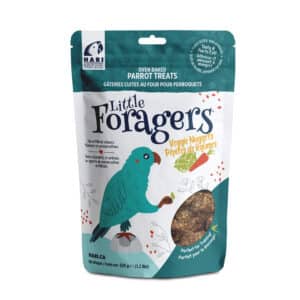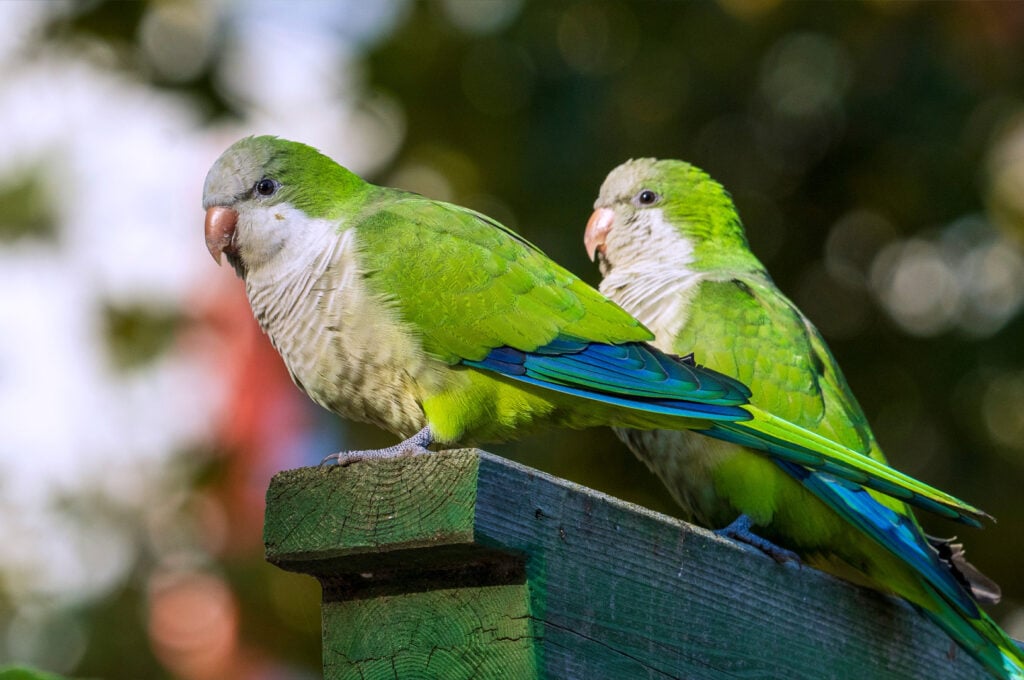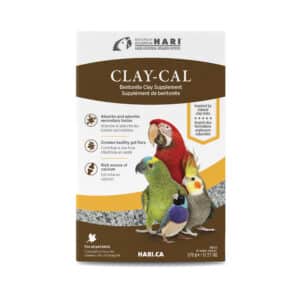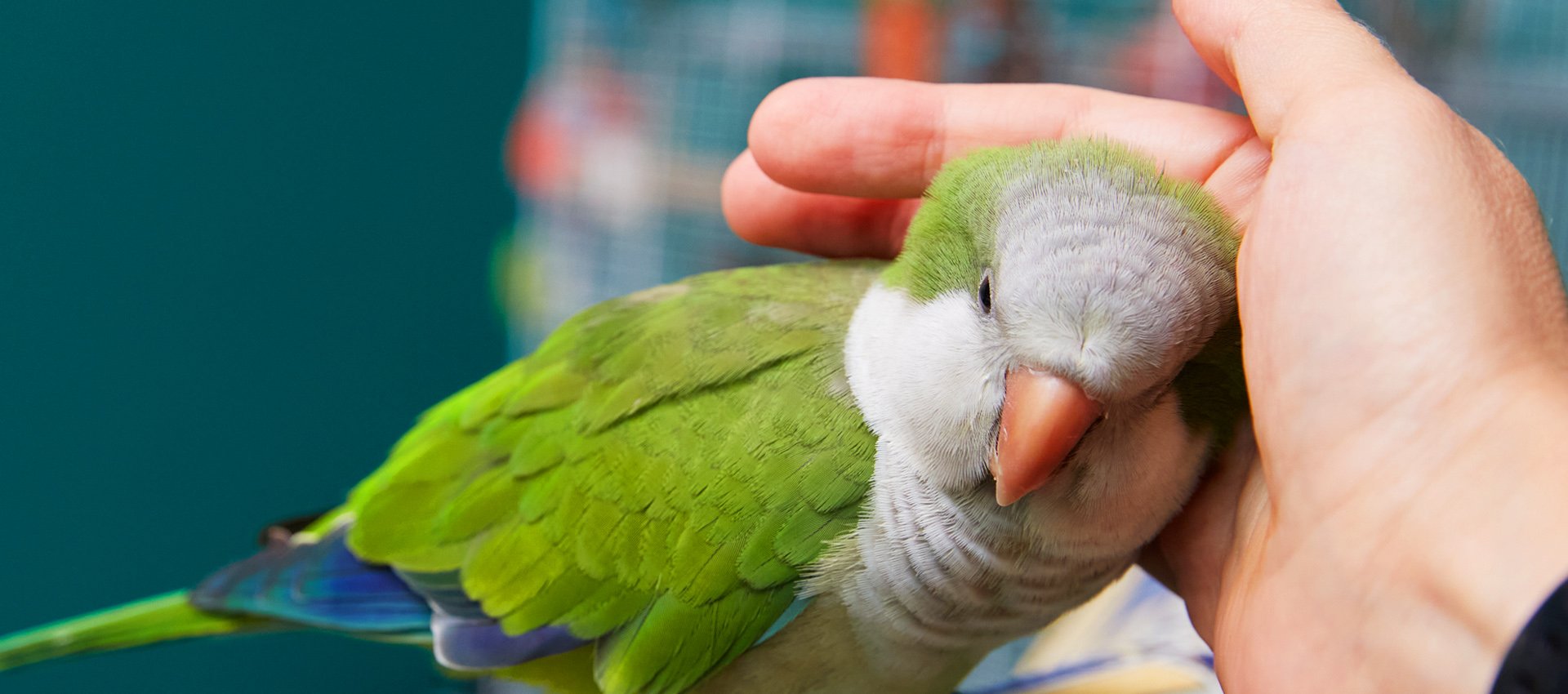Your cart is currently empty!
HARI Official Brand Site
Common Species
Quaker Parrot or Monk Parakeet (Myiopsitta monachus)
Origin/Habitat
South America from central Bolivia and parts of Brazil
Charming and Comical Personalities
Quaker Parrots, also known as Monk Parakeets, are small in size, but they have big personalities. It’s not surprising that they are a popular choice for those seeking a small parrot companion. These confident, social, and charming birds are entertaining and have an excellent talking ability. They have a loving and affectionate relationship with their owners and are ideal for families or individuals looking for a playful and intelligent pet.
Quaker Parrots are native to South America, specifically central Bolivia and parts of Brazil. They typically live in flocks or colonies of 10 to over 100 birds near water, food, and suitable nesting sites. Many Quakers that have escaped captivity have formed self-sustaining feral colonies in urban areas across the globe. The main species is typically referred to as Myiopsitta monachus, but some sub-species like M.m calita can be found in the pet industry. It’s worth noting that the first Blue mutation of the Monk Parrakeet was discovered in Belgium during the 1940s.
Quaker parrots are known for their unique nesting behavior, building nests in colonies out of twigs and branches. If you own a Quaker parrot, you may notice it constructing elaborate dwellings in and around its cage.
Quaker Parrots have an average lifespan of 20 to 25 years.
Physical Description
Quakers are about 10-12 inches in length with an average weight of about 120 grams.


The nominate species is predominately green with a grey chest, but many exciting colour mutations such as Albino, Blue Opaline, mauve, even Paladino (males) have evolved with select breeding programs.
Health Booklet
Keeping track of bird health by recording their growth, development, behavior and environment in a booklet can help ensure that your companion parrot will be healthy and happy for many years to come.
Sex
DNA sexing is the most accurate way to determine the sex of Quakers-unless the quaker is an adult Paladino mutation. Only males retain the Paladino markings. However, much like many of our other parrot species, a DNA blood test performed by a qualified experienced avian practitioner is also a good tool to determine sex of the bird.

Personality Traits & Behaviours
Quakers are fun and very social- and are very much a flock bird. They do like to be out of their cages to explore their environments so it’s important that they be supervised to avoid household accidents. Quaker Parrots are also natural nest builders and weavers and will often instinctively shred items to build a nest. Shredding toys should be reserved for play gyms or day cages to avoid undesired hormonal behaviours as the bird reaches sexual maturity.

Noise Level/Speech/Song
Many Quaker Parrots can learn a few spoken words, and they can be a bit loud especially when they are excited or alarmed.

Intelligence & Learning
Quakers are pretty intelligent and will learn a few tricks provided the desired behavior is consistently rewarded with positive reinforcement.

Threats/Conservation
Quaker Parrots are prolific in their native lands. Some escaped Quakers have formed self-sustaining feral colonies in urban areas across the globe. Because of their strong ability to survive in the wild, even in harsh conditions, some states in the U.S. ban them as pets due to agriculture concerns.

Relationship with Humans
Quaker parrots are highly social creatures that love to be the center of attention. They have a playful and curious personality that can easily charm people. These birds are extremely social and need a strong bond with their owner (or other quakers if you have more than one) to be happy. As you spend more time together, your relationship with your bird will grow beyond just being a “pet parrot” to becoming a true “companion parrot”. Quaker parrots are excellent talkers and can learn many words and phrases if raised alone. However, due to their strong flock mentality, a single bird will see all humans in the household as part of their flock, but may choose to favor one or two family members as trusted humans. It’s crucial for everyone in the household to spend equal time caring for and playing with their Quaker parrot.
Care
The general rule of thumb when buying a bird cage is to buy the largest cage you can afford. For optimum health and safety, the cage should be at least two and a half times the width of the bird’s wingspan in all directions. Cage bar spacing should never be so wide that your bird could stick their head through, and their tail feathers should not be able to touch the bars when they are perched comfortably. Also consider your bird’s beak strength to determine the proper gauge of the bars as some birds have been known to bend the bars and escape.
A rectangular cage with horizontal bars in which your bird has plenty of room to climb and play is the best environment for your parrot. Your parrot will be happiest in a well-ventilated room with as much natural light as possible, yet away from direct sunlight and drafts. Your bird will want to be part of the action but not right in the middle of it. Avoid placing your bird’s cage in the kitchen as there are many hazards including vapors from heated PTFE coated pans (PTFE is better known as TeflonTM), hot stoves, pots of boiling water, and cooking fumes, all of which can be very harmful to your bird. The cage and accessories should be thoroughly cleaned and disinfected weekly. Make sure your bird stays healthy by providing them with fresh food and water every day. Don’t forget to wash their dishes daily!
Time out of the cage every day for socialization and exercise is important. Parrots enjoy supervised activities on a play gym loaded with their favorite toys and enrichment food. Make sure they do not have access to open doors or windows, toilets with the lid up, hot stoves, moving ceiling fans, or large panes of glass. It’s also a good idea to ensure they do not chew on or ingest anything unsafe such as treated or painted wood or unsafe house plants. Do not keep your bird in a room where sprays such as perfume, hair spray, air fresheners, or aerosol sprays are used frequently.
For the safety of your beloved parrot, we advise against leaving them unattended with other pets like dogs, cats, or ferrets.
When it comes to feeding your Quaker Parrot, there are countless opinions to consider. Here’s what we believe: a high-quality extruded diet – such as Tropican – serves as the foundation of your parrot’s diet, while other healthy enrichment foods provide welcome variety.
Pelleted bird food is the ideal source of nutrition to keep your parrot healthy. However, it’s important to offer variety, too, gourmet seeds, dried fruits, vegetables, and nuts (such as Tropimix), beans, and fresh fruits and vegetables all provide essential nutrients and diversity to your parrot’s diet. Sensible, healthy table foods such as cooked pasta, rice, hard-boiled eggs, multigrain toast, and unsalted crackers can also serve as treats in small amounts.
It is crucial to avoid unhealthy people foods. Never feed your parrot chocolate, alcohol, caffeine beverages, or avocado as even small amounts can be toxic. Salty or sugary foods should also be avoided. Check out our feeding recommendations for most parrot species.
Of course, fresh water every day is very important too. Remember to wash and refill your parrot’s water bowl daily to keep your bird healthy and happy.
If you have a Quaker Parrot, it’s important to ensure they get enough sleep. They need around ten to twelve hours of uninterrupted sleep each night. If your bird cage is usually in a room with a lot of activity or movement, it’s best to move it to a quiet and dark area at night. This will help your parrot get the rest they need to stay healthy.
Many bird owners choose to cover their bird cage at night to block out extra light, especially during the summer months. This can also help keep the cage warm in colder climates. Make sure to provide a comfortable perch for your parrot, placed higher up in the cage. This will give them a sense of security and help keep their feet healthy.
If your parrot suffers from night terrors or if you do not plan on covering the cage, you can use an infrared basking light or a small night light in the room to provide a little bit of light and comfort. Remember, getting enough sleep is crucial to the well-being of your Quaker Parrot.
It is important to provide Quaker Parrots with a variety of perch types and sizes to prevent Pododermatitis or Bumblefoot. At least three perches should be available for your bird, each appropriately sized for their feet. These can include cotton or sisal rope perches, as well as natural wood perches with varying diameters. Ensure that the perches remain clean and free of loose strands if using cotton or sisal rope. Regularly replace perches as necessary due to wear and tear. If you have a grooming perch, keep it away from food and water dishes and avoid placing it at the highest level of the cage.
To keep your Quaker Parrot happy and healthy, it is vital to offer them a variety of toys. Quaker Parrots have strong beaks and enjoy chewing, so it’s best to provide them with wooden toys as well as other types of toys like ladders, swings, and bells. As Quaker Parrots are intelligent creatures, mental or puzzle toys, particularly foraging toys, can be beneficial to them. To ensure you choose the right toys for your bird’s size and needs, consider looking at Smart Play and Active Play toys for recommendations.
If you want to build a strong bond with your Quaker parrot, consistent positive behavior training is a great way to do it. You can start by teaching them basic commands like “step up” and “step down”. Make sure to use positive reinforcement and praise to encourage good behavior. Spending time training your bird on a stand with their favorite treat is an excellent way to give them a break from their main cage.
To prevent fear and aggression towards strangers, it’s important to expose your parrot to new situations. Socializing your bird by introducing them to different people, environments, toys, and foods is key. The more varied experiences your bird has, the more comfortable and well-adjusted they will be.
Regular bathing is crucial for maintaining your Quaker Parrot’s health. It helps to keep their feathers and skin in excellent condition, while also moisturizing their nasal passages and feet. If your Quaker Parrot has the opportunity, they will often bathe themselves. However, if they are hesitant, you can gently mist them using a spray bottle with warm water or use a shower perch. Before misting, ensure that you remove any seeds or pellets from their cage to prevent the growth of mold and bacteria. We recommend bathing your bird early in the day and letting them dry naturally in a draft-free area.
Many parrot owners prefer to keep their bird’s wing feathers trimmed, although it is ultimately a personal choice. Trimming is a painless process, similar to getting a hair cut, and should be done twice a year as the bird moults. It’s also important to regularly inspect and groom your bird’s toenails. However, we recommend that someone experienced do the trimming for you, as it’s easy to accidentally clip a blood feather if you’re not familiar with what to look for. Keep in mind that trimming is not a guarantee that your bird won’t be able to fly – even one or two grown-in feathers can result in flight ability. As a precaution, never take your bird outside without a secure cage or a properly fitted bird harness.
To ensure your parrot lives a long and healthy life, it’s crucial to provide a safe living environment. Here’s a list of common household hazards to avoid: Non-stick surfaces, like TeflonTM coated pans, self-cleaning ovens, and oven cleaners, cigarette smoke, paint and paint fumes, scented candles, household cleaners, floor polish, hairspray, chlorine bleach, perfume, aerosol sprays, nail polish, and nail polish remover fumes, and harmful or toxic houseplants. It’s also important to educate everyone in your household about food and products that can be toxic to parrots, such as avocados, chocolate, coffee beans, onions, salt, and fruit seeds or pits. Additionally, keep in mind that ceiling fans, cupboards, blinds, open doors, and windows can pose risks, as your pet may fly into them, get trapped, or fly away.
It’s important to keep an eye out for any small changes in your bird’s behavior or health, as birds often try to hide signs of illness. To ensure your Quaker parrot stays healthy, it’s recommended to schedule a yearly check-up with a veterinarian who specializes in treating birds or other exotic pets. Some clinics may offer basic bird appointments, but for more serious cases, they may refer you to a certified avian veterinarian. Consulting with an avian veterinarian can be helpful in providing advice on proper health care for your bird.
Availability in the Pet Market
If you’re interested in owning a Quaker Parrot, you can find them at avian specialty shops, pet dealers, and reputable breeders. Online adoption organizations and rescues are also potential sources for adoption. It’s important to note that Quaker Parrots are illegal in some states, so be sure to consider the laws in your state before making a purchase.
Quaker Parrots are incredibly social birds and love to be the center of attention in any home.

Aviculture
Breeding Habits
When in their natural habitat, Quaker Parrots breed once every year, but the timing depends on their species and geographic location. They typically lay 4 to 7 eggs in a clutch. In an aviary setting, Quaker Parrots usually nest in late spring or sometimes in the fall, with an average of 5-7 eggs per clutch. Quaker Parrots usually reach maturity at around 2 years of age.
Hatchling to Fledgling
Most aviculturists catering to the pet bird trade prefer to have parent birds raise their young for about two to three weeks before beginning hand feeding. Breeding parrots should be in optimal health and receive proper nutrition to support the needs of both the “expectant” parents and the nestlings. Tropican High Performance 4mm, 8mm, Sticks and Tropimix Small & Large Parrot are excellent options, as well as vegetables and fruits high in beta-carotene to meet the nutritional needs of breeding parrots. Adding Prime Vitamins to the diet can also benefit breeding pairs on a predominately seed-based diet.
Suggested Products

Smart.Play
Bamboo Tower, Enrichment Parrot Toy for Medium Birds
Enrichment Parrot Toy for Medium Birds
Made in Canada





